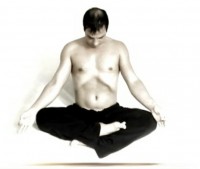Nirvana Pranayama  Pursed Lip Breathing
Pursed Lip Breathing
In Sanskrit Nirvana means "blowing out". It often refers to leaving worldly attachments behind. Quite often when performing this the practitioner visualizes toxins leaving the body. At other times the practitioner reflects upon a worldly desire and visualizes it being blown from their consciousness.
There are many different ways to blow the air out of your lungs just as there are many ways to whistle. You can blow the air with the cheeks filled or keep the cheeks deflated. You can also blown the air out like you are giving a kiss.
It is the primary breathing control given by health care professionals for breathing problems, such as asthma and respiratory diseases such as chronic obstructive pulmonary disease (COPD).
It lengthens the breath and delivers more oxygen to the body when performed. It also strengthens the diaphragm.
Stage 1  Nirvana Pranayama
Nirvana Pranayama
Breathe in deeply but be careful not to over breath as this will strain the heart and shorten the exhalation. Breathe into your belly for a deeper breath and less strain on the heart. When you feel a little resistance stop.
Blow the air out of the lungs lightly. Not to forcefully as it will be longer when done gently. Be careful not to do your breathing techniques too forcefully otherwise conflict and pressure will be created in the heart and mind.

Stage 2  Nirvana Pranayama
Nirvana Pranayama
Breathe in deeply.
Allow the breath to take at least 2 or 3 seconds at the top of the inhalation without holding. Just allow it cross over really slowly to the exhalation.
Blow the air out of the lungs lightly. Make a special effort to blow all of the air out of the lungs. If you feel fatigued take a few breaths and try again.
Experiment with different lip positions.

Stage 3  Nirvana Pranayama
Nirvana Pranayama
Breathe in deeply.
Hold at the top of the breath gripping the air.
Holding too long will shorten the exhalation.
Blow the air out of the lungs lightly. Make sure all the air leaves the lungs.



